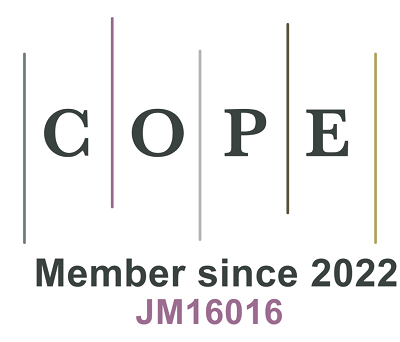REFERENCES
1. Global topical drug delivery market (2023-2028) by products, routes of administration, end-user, and geography, competitive analysis, impact of covid-19 with ansoff analysis. Available from: https://www.researchandmarkets.com/reports/5696819/global-drug-delivery-devices-market-2023-2028. [Last accessed on 10 Sep 2024].
2. Topical drug delivery - global strategic business report. Available from: https://www.researchandmarkets.com/reports/5303550/topical-drug-delivery-global-strategic. [Last accessed on 10 Sep 2024].
3. Raina N, Rani R, Thakur VK, Gupta M. New insights in topical drug delivery for skin disorders: from a nanotechnological perspective. ACS Omega 19;8:19145-167.
4. Buhse L, Kolinski R, Westenberger B, et al. Topical drug classification. Int J Pharm 2005;295:101-12.
5. Hmingthansanga V, Singh N, Banerjee S, Manickam S, Velayutham R, Natesan S. Improved topical drug delivery: role of permeation enhancers and advanced approaches. Pharmaceutics 2022;14:2818.
6. Eilstein J, Léreaux G, Arbey E, Daronnat E, Wilkinson S, Duché D. Xenobiotic metabolizing enzymes in human skin and SkinEthic reconstructed human skin models. Exp Dermatol 2015;24:547-9.
7. Wiegand C, Hewitt NJ, Merk HF, Reisinger K. Dermal xenobiotic metabolism: a comparison between native human skin, four in vitro skin test systems and a liver system. Skin Pharmacol Physiol 2014;27:263-75.
8. Couto N, Newton JRA, Russo C, et al. Label-free quantitative proteomics and substrate-based mass spectrometry imaging of xenobiotic metabolizing enzymes in ex vivo human skin and a human living skin equivalent model. Drug Metab Dispos 2021;49:39-52.
9. Leake CD. Annual review of pharmacology and toxicology: review of reviews. Annu Rev Pharmacol Toxicol 1978;18:581-8.
10. Almeida M, Diogo R. Human enhancement: genetic engineering and evolution. Evol Med Public Health 2019;2019:183-9.
11. D’Orazio J, Jarrett S, Amaro-Ortiz A, Scott T. UV radiation and the skin. Int J Mol Sci 2013;14:12222-48.
12. Steinhoff M, Alam M, Ahmad A, Uddin S, Buddenkotte J. Targeting oncogenic transcription factors in skin malignancies: an update on cancer stemness and therapeutic outcomes. Semin Cancer Biol 2022;87:98-116.
13. Simpson CL, Patel DM, Green KJ. Deconstructing the skin: cytoarchitectural determinants of epidermal morphogenesis. Nat Rev Mol Cell Biol 2011;12:565-80.
14. Kolarsick PAJ, Kolarsick MA, Goodwin C. Anatomy and physiology of the skin. J Dermat Nurses Asso 2011;3:203-13.
15. Oesch F, Fabian E, Oesch-Bartlomowicz B, Werner C, Landsiedel R. Drug-metabolizing enzymes in the skin of man, rat, and pig. Drug Metab Rev 2007;39:659-98.
16. Oesch F, Fabian E, Landsiedel R. Xenobiotica-metabolizing enzymes in the skin of rat, mouse, pig, guinea pig, man, and in human skin models. Arch Toxicol 2018;92:2411-56.
17. Baron JM, Höller D, Schiffer R, et al. Expression of multiple cytochrome p450 enzymes and multidrug resistance-associated transport proteins in human skin keratinocytes. J Invest Dermatol 2001;116:541-8.
18. Pyo SM, Maibach HI. Maibach, skin metabolism: relevance of skin enzymes for rational drug design. Skin Pharmacol Physiol 2019;32:283-94.
19. Rekka EA, Kourounakis PN, Pantelidou M. Xenobiotic metabolising enzymes: impact on pathologic conditions, drug interactions and drug design. Curr Top Med Chem 2019;19:276-91.
20. Ahmad N, Mukhtar H. Cytochrome p450: a target for drug development for skin diseases. J Invest Dermatol 2004;123:417-25.
21. Rendic S, Guengerich FP. Guengerich, survey of human oxidoreductases and cytochrome P450 enzymes involved in the metabolism of xenobiotic and natural chemicals. Chem Res Toxicol 2015;28:38-42.
22. Neis MM, Wendel A, Wiederholt T, et al. Expression and induction of cytochrome P450 isoenzymes in human skin equivalents. Skin Pharmacol Physiol 2010;23:29-39.
23. Slominski RM, Raman C, Elmets C, Jetten AM, Slominski AT, Tuckey RC. The significance of CYP11A1 expression in skin physiology and pathology. Mol Cell Endocrinol 2021;530:111238.
24. Slominski A, Semak I, Zjawiony J, et al. The cytochrome P450scc system opens an alternate pathway of vitamin D3 metabolism. FEBS J 2005;272:4080-90.
25. Slominski AT, Kim TK, Janjetovic Z, et al. Biological effects of CYP11A1-derived Vitamin D and lumisterol metabolites in the skin. J Invest Dermatol 2024;11:S0022-202X(24)00386.
26. Slominski AT, Li W, Kim TK, et al. Novel activities of CYP11A1 and their potential physiological significance. J Steroid Biochem Mol Biol 2015;151:25-37.
27. van Eijl S, Zhu Z, Cupitt J, et al. Elucidation of xenobiotic metabolism pathways in human skin and human skin models by proteomic profiling. PLoS One 2012;7:e41721.
28. Di L, Balesano A, Jordan S, Shi SM. The role of alcohol dehydrogenase in drug metabolism: beyond ethanol oxidation. AAPS J 2021;23:20.
29. Muzio G, Maggiora M, Paiuzzi E, Oraldi M, Canuto RA. Aldehyde dehydrogenases and cell proliferation. Free Radic Biol Med 2012;52:735-46.
30. Xia J, Li S, Liu S, Zhang L. Aldehyde dehydrogenase in solid tumors and other diseases: potential biomarkers and therapeutic targets. MedComm (2020) 2023;4:e195.
31. Manevski N, Balavenkatraman KK, Bertschi B, et al. Aldehyde oxidase activity in fresh human skin. Drug Metab Dispos 2014;42:2049-57.
32. Barski OA, Tipparaju SM, Bhatnagar A. Bhatnagar, the aldo-keto reductase superfamily and its role in drug metabolism and detoxification. Drug Metab Rev 2008;40:553-624.
33. Wu W, Jiang T, Lin H, Chen C, et al. The specific binding and promotion effect of azoles on human aldo-keto reductase 7A2. Metabolites 2023;13:601.
34. Lee A, Tysome JR, Saeed SR. Topical azole treatments for otomycosis. Cochrane Database Syst Rev 2021;5:Cd009289.
35. Shi SM, Di L. The role of carbonyl reductase 1 in drug discovery and development. Expert Opin Drug Metab Toxicol 2017;13:859-70.
36. Kapelyukh Y, Henderson CJ, Scheer N, et al. Defining the contribution of CYP1A1 and CYP1A2 to Drug metabolism using humanized CYP1A1/1A2 and Cyp1a1/Cyp1a2 knockout mice. Drug Metab Dispos 2019;47:907-18.
37. Li F, Zhu W, Gonzalez FJ. Gonzalez, potential role of CYP1B1 in the development and treatment of metabolic diseases. Pharmacol Ther 2017;178:18-30.
38. Hedrich WD, Hassan HE, Wang H. Insights into CYP2B6-mediated drug-drug interactions. Acta Pharm Sin B 2016;6:413-25.
39. Szymański Ł, Skopek R, Palusińska M, et al. Retinoic acid and its derivatives in skin. Cells 2020;9:2660.
40. Hakkola J, Hukkanen J, Turpeinen M, Pelkonen O. Inhibition and induction of CYP enzymes in humans: an update. Arch Toxicol 2020;94:3671-722.
41. Nebert DW, Wikvall K, Miller WL. Human cytochromes P450 in health and disease. Philos Trans R Soc Lond B Biol Sci 2013;368:20120431.
42. Tuckey RC, Cheng CYS, Slominski AT. Slominski, the serum vitamin d metabolome: what we know and what is still to discover. J Steroid Biochem Mol Biol 2019;186:4-21.
43. O’Byrne SM, Blaner WS. Retinol and retinyl esters: biochemistry and physiology. J Lipid Res 2013;54:1731-43.
44. Gottfried E, Rehli M, Hahn J, Holler E, Andreesen R, Kreutz M. Monocyte-derived cells express CYP27A1 and convert vitamin D3 into its active metabolite. Biochem Biophys Res Commun 2006;349:209-13.
46. Lepesheva GI, Waterman MR. Sterol 14alpha-demethylase cytochrome P450 (CYP51), a P450 in all biological kingdoms. Biochim Biophys Acta 2007;1770:467-77.
47. Lepesheva GI, Hargrove TY, Kleshchenko Y, Nes WD, Villalta F, Waterman MR. CYP51: a major drug target in the cytochrome P450 superfamily. Lipids 2008;43:1117-25.
48. Guo H, Liang S, Wang Y, et al. Cytochrome B5 type A alleviates HCC metastasis via regulating STOML2 related autophagy and promoting sensitivity to ruxolitinib. Cell Death Dis 2022;13:623.
49. Phillips IR, Shephard EA. Drug metabolism by flavin-containing monooxygenases of human and mouse. Expert Opin Drug Metab Toxicol 2017;13:167-181.
50. Fukami T, Yokoi T, Nakajima M. Non-P450 drug-metabolizing enzymes: contribution to drug disposition, toxicity, and development. Annu Rev Pharmacol Toxicol 2022;62:405-25.
51. Gautheron J, Jéru I. The multifaceted role of epoxide hydrolases in human health and disease. Int J Mol Sci 2020;22:13.
52. Rižner TL. The important roles of steroid sulfatase and sulfotransferases in gynecological diseases. Front Pharmacol 2016;7:30.
53. Marchais-Oberwinkler S, Henn C, Möller G, et al. 17β-hydroxysteroid dehydrogenases (17β-HSDs) as therapeutic targets: protein structures, functions, and recent progress in inhibitor development. J Steroid Biochem Mol Biol 2011;125:66-82.
54. Götz C, Pfeiffer R, Tigges J, et al. Xenobiotic metabolism capacities of human skin in comparison with a 3D epidermis model and keratinocyte-based cell culture as in vitro alternatives for chemical testing: activating enzymes (Phase I). Exp Dermatol 2012;21:358-63.
55. Federici L, Lo Sterzo C, Pezzola S, et al. Structural basis for the binding of the anticancer compound 6-(7-nitro-2,1,3-benzoxadiazol-4-ylthio)hexanol to human glutathione s-transferases. Cancer Res 2009;69:8025-34.
56. Zhou H, Brock J, Liu D, Board PG, Oakley AJ. Structural insights into the dehydroascorbate reductase activity of human omega-class glutathione transferases. J Mol Biol 2012;420:190-203.
57. Patskovsky Y, Patskovska L, Almo SC, Listowsky I. Transition state model and mechanism of nucleophilic aromatic substitution reactions catalyzed by human glutathione S-transferase M1a-1a. Biochemistry 2006;45:3852-62.
58. Tars K, Larsson AK, Shokeer A, Olin B, Mannervik B, Kleywegt GJ. Structural basis of the suppressed catalytic activity of wild-type human glutathione transferase T1-1 compared to its W234R mutant. J Mol Biol 2006;355:96-105.
59. Gamage N, Barnett A, Hempel N, et al. Human sulfotransferases and their role in chemical metabolism. Toxicol Sci 2006;90:5-22.
60. Wang FY, Wang P, Zhao DF, et al. Analytical methodologies for sensing catechol-O-methyltransferase activity and their applications. J Pharm Anal 2021;11:15-27.
61. Rao SP, Dobariya P, Bellamkonda H, More SS. Role of 3-mercaptopyruvate sulfurtransferase (3-MST) in physiology and disease. Antioxidants (Basel) 2023;12:603.
62. Chermnykh ES, Alpeeva EV, Vorotelyak EA. Vorotelyak, transglutaminase 3: the involvement in epithelial differentiation and cancer. Cells 2020;9:1996.
63. Lee M, Seo J, Bang D, Kim DY. Thiopurine S-methyltransferase polymorphisms in korean dermatologic patients. Ann Dermatol 2017;29:529-35.
64. Kruithof PD, Lunev S, Aguilar Lozano SP, et al. Unraveling the role of thiosulfate sulfurtransferase in metabolic diseases. Biochim Biophys Acta Mol Basis Dis 2020;1866:165716.
65. Kazem S, Linssen EC, Gibbs S. Skin metabolism phase I and phase II enzymes in native and reconstructed human skin: a short review. Drug Discov Today 2019;24:1899-1910.
66. Hu T, Khambatta ZS, Hayden PJ, et al. Xenobiotic metabolism gene expression in the EpiDerm™ in vitro 3D human epidermis model compared to human skin. Toxicology in Vitro 2010;24:1450-63.
67. Janmohamed A, Dolphin CT, Phillips IR, Shephard EA. Quantification and cellular localization of expression in human skin of genes encoding flavin-containing monooxygenases and cytochromes P450. Biochem Pharmacol 2001;62:777-86.
68. Shimizu Y, Sasaki T, Yonekawa E. Association of CYP1A1 and CYP1B1 inhibition in in vitro assays with drug-induced liver injury. J Toxicol Sci 2021;46:167-76.
69. Hewitt NJ, Edwards RJ, Fritsche E, et al. Use of human in vitro skin models for accurate and ethical risk assessment: metabolic considerations. Toxicol Sci 2013;133:209-17.
70. Ściskalska M, Milnerowicz H. The role of GSTπ isoform in the cells signalling and anticancer therapy. Eur Rev Med Pharmacol Sci 2020;24:8537-50.
71. Lockley DJ, Howes D, Williams FM. Cutaneous metabolism of glycol ethers. Arch Toxicol 2005;79:160-8.
72. Liu M, Zhang J, Wang Y, et al. Non-invasive proteome-wide quantification of skin barrier-related proteins using label-free LC-MS/MS analysis. Mol Med Rep 2020;21:2227-35.
73. Candi E, Oddi S, Paradisi A, et al. Expression of transglutaminase 5 in normal and pathologic human epidermis. J Invest Dermatol 2002;119:670-7.
74. Tokudome Y, Katayanagi M, Hashimoto F. Esterase activity and intracellular localization in reconstructed human epidermal cultured skin models. Ann Dermatol 2015;27:269-74.
75. Lau WM, Ng KW, Sakenyte K, Heard CM. Distribution of esterase activity in porcine ear skin, and the effects of freezing and heat separation. Int J Pharm 2012;433:10-15.
76. Telaprolu KC, Grice JE, Mohammed YH, Roberts MS. Human skin drug metabolism: relationships between methyl salicylate metabolism and esterase activities in ivpt skin membranes. Metabolite 2023;13:934.
77. Eilstein J, Léreaux G, Budimir N, Hussler G, Wilkinson S, Duché D. Comparison of xenobiotic metabolizing enzyme activities in ex vivo human skin and reconstructed human skin models from SkinEthic. Arch Toxicol 2014;88:1681-94.
78. Lefèvre-Utile A, Braun C, Haftek M, Aubin F. Five functional aspects of the epidermal barrier. Int J Mol Sc 2021;22:11676.
79. Redoules D, Tarroux R, Périé J. Epidermal enzymes: their role in homeostasis and their relationships with dermatoses. Skin Pharmacol Appl Skin Physiol 1998;11:183-92.
80. Nauroy P, Nyström A. Kallikreins: essential epidermal messengers for regulation of the skin microenvironment during homeostasis, repair and disease. Matrix Biol Plus 2020;6-7:100019.
81. Tabolacci C, Lentini A, Provenzano B, Beninati S. Evidences for a role of protein cross-links in transglutaminase-related disease. Amino Acids 2012;42:975-86.
82. Wu Z, Hansmann B, Meyer-Hoffert U, Gläser R, Schröder JM. Molecular identification and expression analysis of filaggrin-2, a member of the S100 fused-type protein family. PLoS One 2009;4:e5227.
83. Lukić M, Pantelić I, Savić SD. Towards optimal ph of the skin and topical formulations: from the current state of the art to tailored products. Cosmetics 2021;8:69.
84. Slominski AT, Zmijewski MA, Skobowiat C, Zbytek B, Slominski RM, Steketee JD. Introduction, in sensing the environment: regulation of local and global homeostasis by the skin’s neuroendocrine system. Adv Anat Embryol Cell Biol 2012;212:1-115.
85. Veith A, Moorthy B. Role of cytochrome P450s in the generation and metabolism of reactive oxygen species. Curr Opin Toxicol 2018;7:44-51.
86. Slominski RM, Chen JY, Raman C, Slominski AT. Photo-neuro-immuno-endocrinology: how the ultraviolet radiation regulates the body, brain, and immune system. Proc Natl Acad Sci U S A 2024;121:e2308374121.
87. Slominski AT, Zmijewski MA, Semak I, et al. Melatonin, mitochondria, and the skin. Cell Mol Life Sci 2017;74:3913-25.
88. Slominski AT, Kim TK, Slominski RM. Melatonin and its metabolites can serve as agonists on the aryl hydrocarbon receptor and peroxisome proliferator-activated receptor gamma. Int J Mol Sci 2023;24:15496.
89. Slominski AT, Zmijewski MA, Plonka PM, Szaflarski JP, Paus R. How UV light touches the brain and endocrine system through skin, and why. Endocrinology 2018;159:1992-2007.
90. Slominski A, Tobin DJ, Shibahara S, Wortsman J. Melanin pigmentation in mammalian skin and its hormonal regulation. Physiol Rev 2004;84:1155-228.
91. Slominski A, Zmijewski MA, Pawelek J. L-tyrosine and L-dihydroxyphenylalanine as hormone-like regulators of melanocyte functions. Pigment Cell Melanoma Res 2012;25:14-27.
92. Karkoszka M, Rok J, Wrzesniok D. Melanin biopolymers in pharmacology and medicine-skin pigmentation disorders, implications for drug action, adverse effects and therapy. Pharmaceuticals (Basel) 2024;17:521.
93. Slominski RM, Kim TK, Janjetovic Z, et al. Malignant melanoma: an overview, new perspectives, and Vitamin D signaling. Cancers (Basel) 2024;16:2262.
94. Feingold KR. Thematic review series: skin lipids. The role of epidermal lipids in cutaneous permeability barrier homeostasis. J Lipid Res 2007;48:2531-46.
95. Jaffri J. Reactive oxygen species and antioxidant system in selected skin disorders. Malays J Med Sci 2023;30:7-20.
96. Palikhe NS, Kim SH, Nam YH, Ye YM, Park HS. Polymorphisms of aspirin-metabolizing enzymes CYP2C9, NAT2 and UGT1A6 in aspirin-intolerant urticaria. Allergy Asthma Immunol Res 2011;3:273-6.
97. Alyami MH, Alyami HS, Alshehri AA, Alsharif WK, Shaikh IA, Algahtani TS. Tamoxifen citrate containing topical nanoemulgel prepared by ultrasonication technique: formulation design and in vitro evaluation. Gels 2022;8:456.
98. Soares-Lopes LR, Soares-Lopes IM, Filho LL, Alencar AP, da Silva BB. Morphological and morphometric analysis of the effects of intralesional tamoxifen on keloids. Exp Biol Med (Maywood) 2017;242:926-9.
99. Machado V, Morais M, Medeiros R. Hyaluronic acid-based nanomaterials applied to cancer: where are we now? Pharmaceutics 2022;14:2092.
100. Zhao J, Agarwal R. Tissue distribution of silibinin, the major active constituent of silymarin, in mice and its association with enhancement of phase II enzymes: implications in cancer chemoprevention. Carcinogenesis 1999;20:2101-8.
102. Romanucci V, Giordano M, Pagano R, et al. Investigation on the solid-phase synthesis of silybin prodrugs and their timed-release. Bioorg Med Chem 2021;50:116478.
103. Karami M, Sharif Makhmalzadeh B, Pooranian M, Rezai A. Preparation and optimization of silibinin-loaded chitosan-fucoidan hydrogel: an in vivo evaluation of skin protection against UVB. Pharm Dev Technol 2021;26:209-19.
104. Bell M, Foley D, Naylor C, et al. Discovery of soft-drug topical tool modulators of sphingosine-1-phosphate receptor 1 (S1PR1). ACS Med Chem Lett 2019;10:341-7.
105. Aprile S, Serafini M, Pirali T. Soft drugs for dermatological applications: recent trends. Drug Discovery Today 2019;24:2234-46.
106. Tom WL, Van Syoc M, Chanda S, Zane LT. Pharmacokinetic profile, safety, and tolerability of crisaborole topical ointment, 2% in adolescents with atopic dermatitis: an open-label phase 2a study. Pediatr Dermatol 2016;33:150-9.
107. Kim D, Chen R, Sheu M, et al. Noncoding dsRNA induces retinoic acid synthesis to stimulate hair follicle regeneration via TLR3. Nat Commun 2019;10:2811.
109. Stresser DM, Kopec AK, Hewitt P, et al. Towards in vitro models for reducing or replacing the use of animals in drug testing. Nat Biomed Eng 2024;8:930-5.
110. Cobbina E, Akhlaghi F. Non-alcoholic fatty liver disease (NAFLD) - pathogenesis, classification, and effect on drug metabolizing enzymes and transporters. Drug Metab Rev 2017;49:197-211.
111. Bhutani P, Joshi G, Raja N, et al. U.S. FDA approved drugs from 2015-June 2020: a perspective. J Med Chem 2021;64:2339-81.
112. Sumantran VN, Mishra P, Bera R, Sudhakar N. Microarray analysis of differentially-expressed genes encoding CYPs and phase II drug metabolizing enzymes in psoriasis and melanoma. Pharmaceutics 2016;8:4.
113. Perihan O, Ergul KB, Neslihan D, Filiz A. The activity of adenosine deaminase and oxidative stress biomarkers in scraping samples of acne lesions. J Cosmet Dermatol 2012;11:323-8.
114. Visconti B, Paolino G, Carotti S, et al. Immunohistochemical expression of VDR is associated with reduced integrity of tight junction complex in psoriatic skin. J Eur Acad Dermatol Venereol 2015;29:2038-42.
115. Ortiz-Lopez LI, Choudhary V, Bollag WB. Updated perspectives on keratinocytes and psoriasis: keratinocytes are more than innocent bystanders. Psoriasis (Auckl) 2022;12:73-87.
116. Danso M, Boiten W, van Drongelen V, et al. Altered expression of epidermal lipid bio-synthesis enzymes in atopic dermatitis skin is accompanied by changes in stratum corneum lipid composition. J Dermatol Sci 2017;88:57-66.









